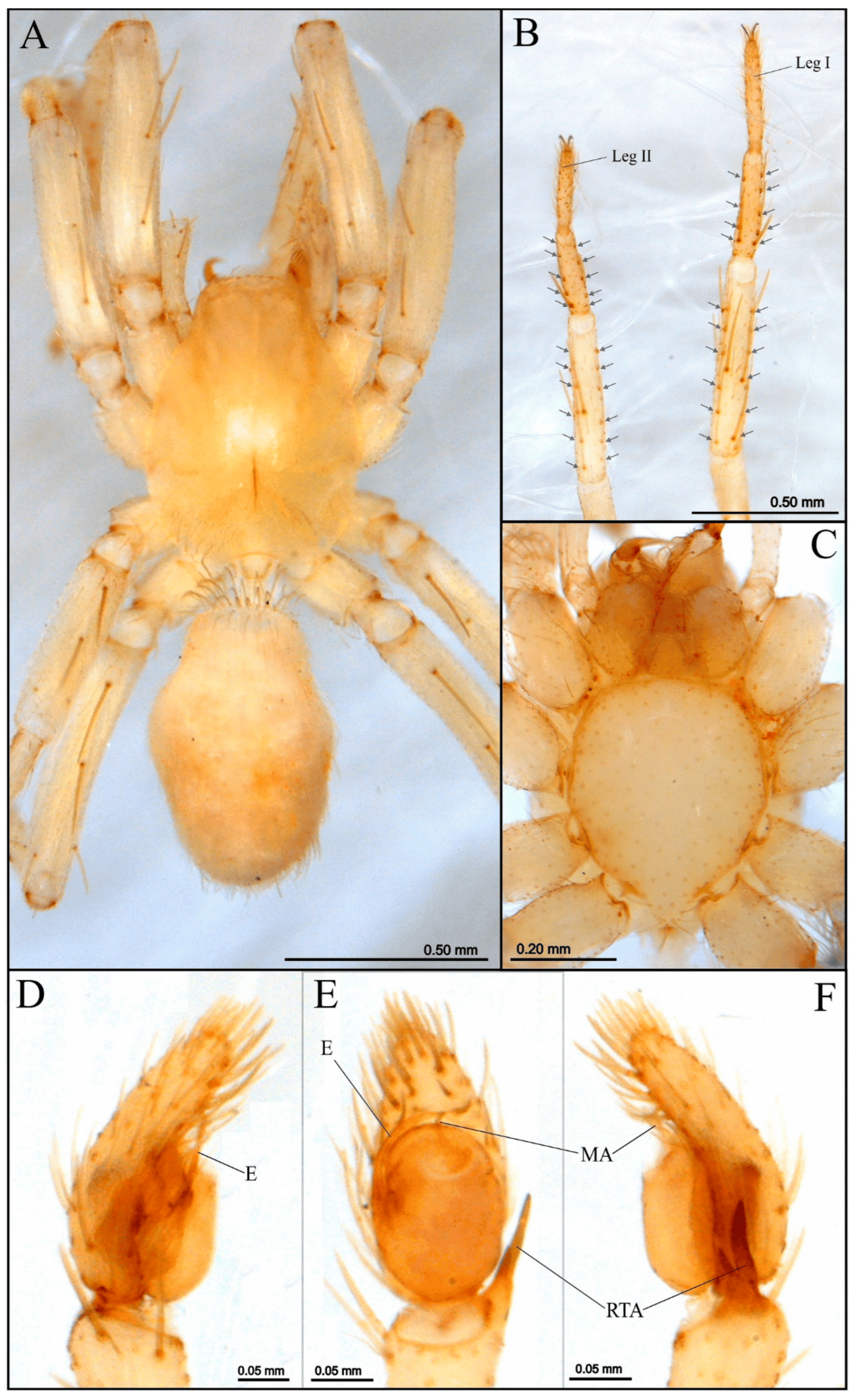A New Genus of Prodidominae Cave Spider from a Paleoburrow and Ferruginous Caves in Brazil (Araneae: Prodidomidae)
A New Genus of Prodidominae Cave Spider from a Paleoburrow and Ferruginous Caves in Brazil (Araneae: Prodidomidae)
Abstract
A new monotypic genus of Prodidominae, Paleotoca gen. n., is proposed to include one cave species collected in a paleoburrow and ferruginous caves from Quadrilátero Ferrífero, Minas Gerais, Brazil: Paleotoca diminas sp. n. (♂♀). The new genus is closely related to other Neotropical Prodidominae by sharing the classic claw tuft clasper. Paleotoca gen. n. is diagnosed by the absence of a dorsal abdominal scutum, a ventral parallel rows of strong spines on the tibia and metatarsus I–II, a lack of a conductor, a discrete median apophysis on the bulb and a bifid retrolateral tibial apophysis in the male palp, a posterior extension that is beak-shaped, and folds of a copulatory duct ventrally visible in the female epigyne. Like other Prodidominae species from caves, P. diminas sp. n. is a troglobitic spider with morphological characteristics that indicate specialization to live in subterranean environments, including reduction in cuticular pigments, eye loss, heavy spination and trichobothria.
Cizauskas, Igor, Robson de A. Zampaulo, and Antonio D. Brescovit. 2024. "A New Genus of Prodidominae Cave Spider from a Paleoburrow and Ferruginous Caves in Brazil (Araneae: Prodidomidae)" Taxonomy 4, no. 3: 574-586. https://doi.org/10.3390/taxonomy4030028
